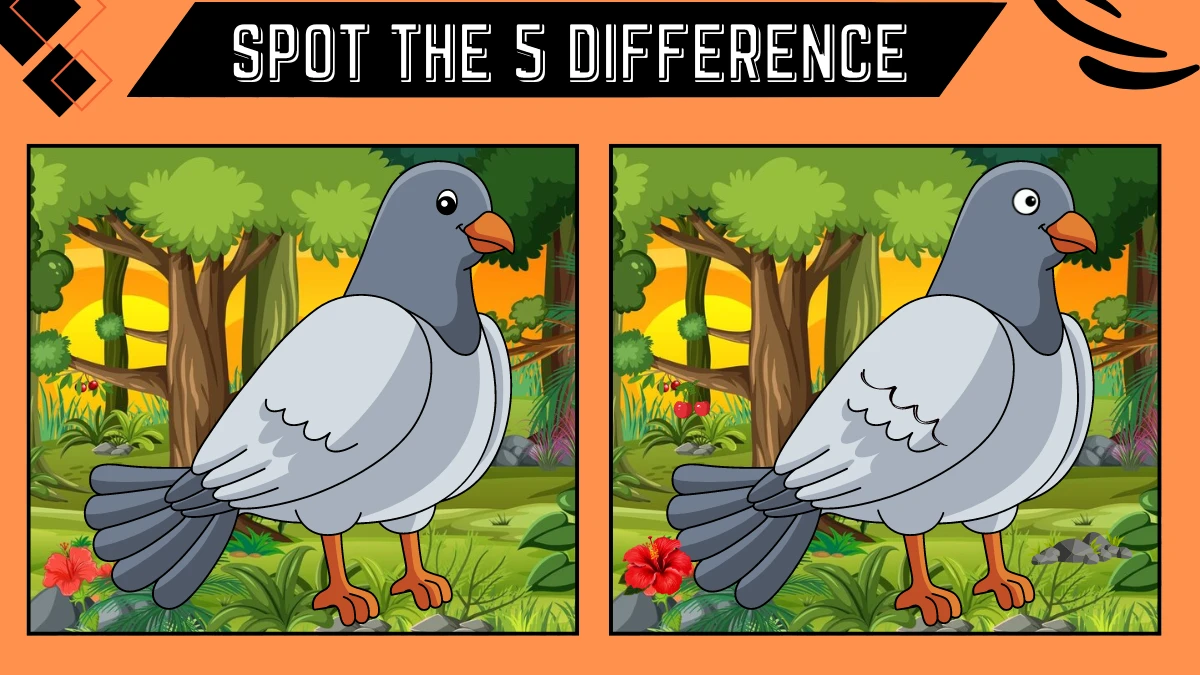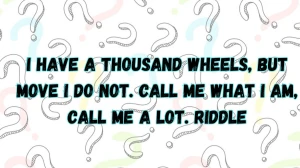- Rojgarlive »
- Riddle »
- A Man Steals $100 From A Shop Riddle - Get the Answer Here
A Man Steals $100 From A Shop Riddle - Get the Answer Here
by B Kishwar
Updated Mar 07, 2024

What is a Riddle?
A riddle is a type of puzzle that challenges people to think creatively and solve a problem or mystery. It usually involves a question or statement that seems confusing or mysterious at first, but there's a clever answer hidden within it. Riddles can come in many forms, such as wordplay, logic puzzles, or descriptions of tricky situations.
One common type of riddle involves asking a question with a surprising or unexpected answer. For example, the riddle "What has keys but can't open locks?" seems puzzling at first, but the answer, "A piano," becomes clear once you think about it.
Riddles are often used as a form of entertainment or mental exercise. They encourage people to use their imagination and logic skills to find solutions. Riddles can also be a way to test someone's intelligence or wit.
Overall, riddles are a fun and challenging way to engage with language and logic. They can be enjoyed by people of all ages and are often shared as a form of social interaction or amusement.
A Man Steals $100 From A Shop Riddle
In this intriguing riddle, a scenario unfolds where a man commits theft from a shop, sparking curiosity about the shop owner's loss. The question begins with the premise: "A man steals a $100 bill from a shop." This sets the stage for a mystery, inviting the reader to ponder the subsequent events. As the riddle unfolds, the man's actions become clearer; he utilizes the stolen $100 bill to make a purchase within the same shop. This unexpected twist raises questions about the dynamics of the transaction and the implications for the shop owner. The riddle then reveals that the goods purchased amount to $70, leaving $30 as change returned to the thief. This progression in the scenario prompts further contemplation about the financial consequences for the shop owner.
Riddle - A man steals a $100 bill from a shop. He then uses that $100 bill to buy $70 worth of goods. The shop owner hands him back $30 in change. How much money did the shop owner lose?
The riddle's structure encourages critical thinking and problem-solving skills as readers attempt to calculate the extent of the shop owner's loss. The use of simple language and relatable scenarios make it accessible to a wide audience, fostering engagement and interaction. As readers reflect on the sequence of events presented in the riddle, they are challenged to consider various factors, such as the value of the stolen goods and the impact of the returned change. Ultimately, the riddle stimulates mental agility and invites individuals to unravel the mystery through logical deduction and creative reasoning.
A Man Steals $100 From A Shop Riddle Answer
In this riddle, the answer lies in understanding the flow of money within the scenario. Despite the initial impression of theft, the man's actions lead to an unexpected outcome for the shop owner. When the man steals $100 from the shop, it seems like a straightforward loss. However, when he uses that stolen $100 bill to buy $70 worth of goods, the situation changes. The shop owner hands back $30 in change, effectively returning part of the stolen money to the thief. So, the shop owner hasn't actually lost the full $100; they've essentially refunded $30 of the stolen amount.
The answer to the riddle is that the shop owner ultimately loses $70 – the value of the goods the thief took without paying. This solution may surprise some, as it highlights the intricacies of the transaction and challenges assumptions about the outcome of the theft. It underscores the importance of considering all aspects of a situation before arriving at a conclusion. So, despite the initial appearance of a straightforward theft, the riddle reveals a clever twist that demonstrates the significance of careful analysis and critical thinking in solving puzzles.
What Are the Benefits of Solving a Riddle?
Solving riddles offers numerous benefits beyond mere entertainment. Here are some of the advantages:
Cognitive Development: Riddles stimulate critical thinking and problem-solving skills. They encourage individuals to think creatively, analyze information, and come up with innovative solutions, thereby enhancing cognitive abilities.
Language Skills: Riddles often involve wordplay, puns, and linguistic tricks, which can improve vocabulary, comprehension, and linguistic creativity. They provide an engaging way to learn new words and understand language nuances.
Mental Agility: By challenging individuals to think outside the box, riddles promote mental flexibility and adaptability. They require quick thinking and the ability to make connections between seemingly unrelated pieces of information.
Creativity: Solving riddles encourages imagination and creativity. It prompts individuals to approach problems from different angles, explore unconventional solutions, and think creatively to find answers.
Confidence Boost: Successfully solving a challenging riddle can boost self-confidence and self-esteem. It provides a sense of accomplishment and validation of one's problem-solving abilities, fostering a positive attitude towards tackling future challenges.
Social Interaction: Riddles can be a fun and engaging way to interact with others. They promote social bonding and communication as individuals collaborate to solve the puzzle or share riddles with friends and family.
Stress Relief: Engaging in riddle-solving can serve as a form of relaxation and stress relief. It offers a temporary escape from daily worries and provides a mental workout that can be both stimulating and enjoyable.
Cultural and Historical Insight: Riddles often reflect cultural beliefs, traditions, and historical contexts. Solving riddles can offer insights into different cultures, traditions, and historical periods, fostering cultural awareness and appreciation.
Solving riddles is a beneficial activity that not only entertains but also stimulates mental faculties, promotes linguistic skills, and fosters creativity and social interaction.
A Man Steals $100 From A Shop Riddle - FAQs
A riddle is a puzzle that challenges people to think creatively and solve a problem. It usually involves a confusing question or statement with a clever answer hidden within it.
The riddle describes a scenario where a man steals $100 from a shop, buys $70 worth of goods with it, and receives $30 in change. The question asks how much money the shop owner lost.
The shop owner ultimately loses $70 – the value of the goods the thief took without paying.
Solving riddles improves critical thinking, language skills, and mental agility. It boosts creativity, confidence, and provides social interaction. It's also a fun way to relieve stress and gain cultural insights.
Riddles enhance cognitive abilities, vocabulary, and problem-solving skills. They encourage thinking outside the box, boost confidence, and offer relaxation. Riddles also provide cultural and historical insights.





